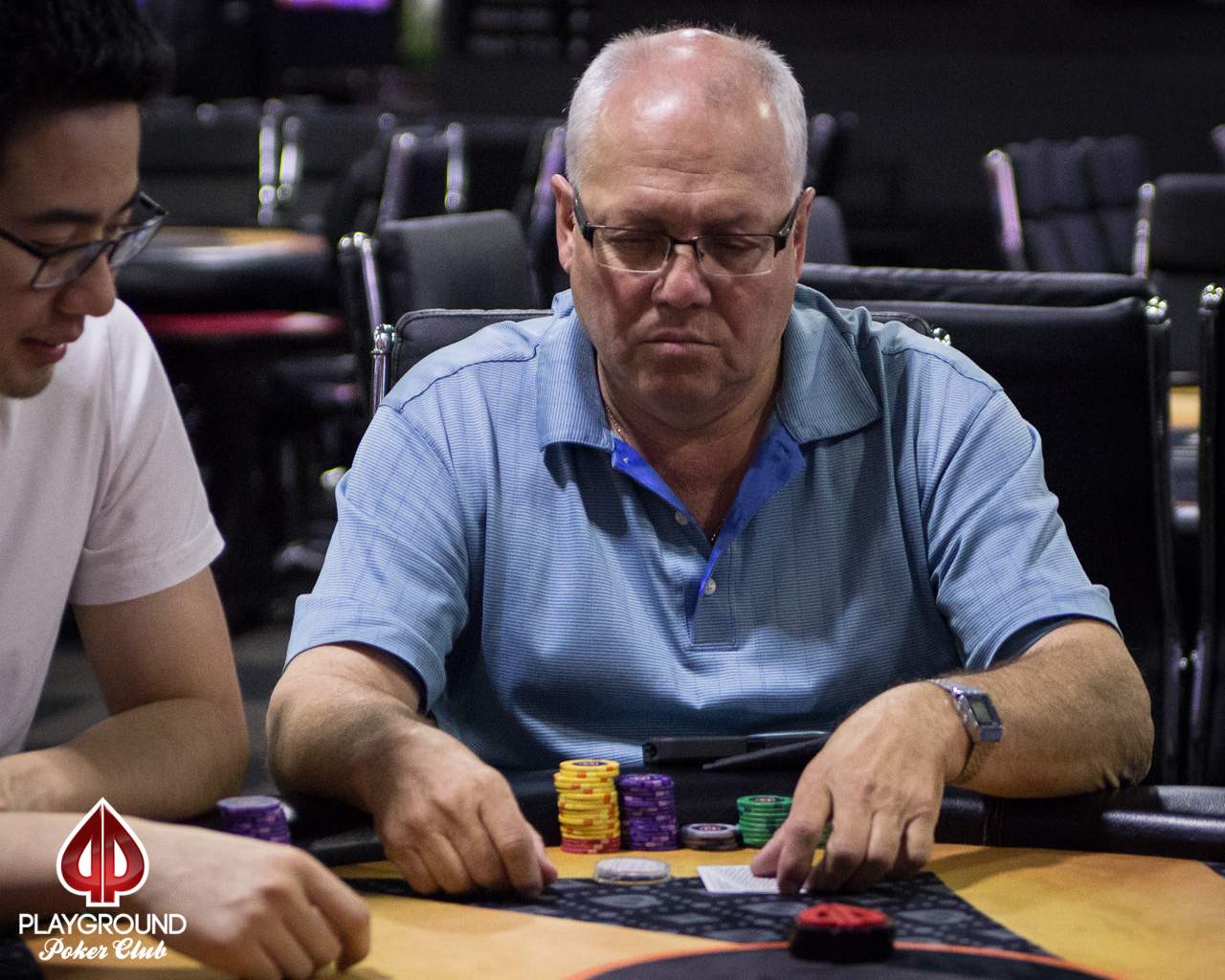Poker Deepstack Strategy
In a cash game, you have to consider your poker strategy all the way to the river with a deep stack at risk. The complexity of cash games is in the value game. Don’t assume, however, that because cash games are all about value they’re simpler. Deep stack poker tournament strategy. Deep Stack tournaments have become the standard in tournament poker. When I first started playing in WSOP events, the starting stack was equal to the tournament buy in. Paying $2,000 to enter a tournament, and starting with only 2K in tournament chips, was crazy.
Play Where the Fishes are! Join 888 Poker!888 Poker has one of the easiest to beat player pools. Don't join the sharks on PokerStars, play where the real fish are!
>>Beat the Fish at 888 Poker Now!<<
Deep Stack Tournament Strategy
In Deep Stack tournaments the number of chips you start with is greater in comparison to regular freezeout MTTs. The blind levels are also twice as long, which makes them preferred by tight/conservative and skilled players who adopt a small ball game. It also reduces the risks and variance of MTTs by allowing you to play under less pressure.
In a typical deep stack tournament you will receive 5,000 starting chips with 10/20 blinds. Compare this to turbo MTTs structures at PokerStars (which give you 500 or 1,000 chips at 10/20 blinds) and you can see the difference immediately.
Best Site for Deep Stack Tournaments: Titan Poker – $500 Bonus!
The best site for non-US players to play Deep Stack tournaments is Titan Poker. They now run the exciting European Deep-stack Championship III, and have a number of regular deepstack tournaments along with deepstack satellites from $3 – $10 entry fees.
For US players PokerStars is the site we recommend for deep stack tournaments. Each day PokerStars runs deepstack tournaments with buy-ins of $10 -$30. The biggest deepstack event at PokerStars takes place on Saturdays with a buy-in of $100.
Deep Stack Tournament Strategy
Because deep stack tournaments run differently to regular online tournaments you need to slow down your game
The first thing noticeable in deep stack tournaments (e.g. WSOP) is that aggressive players who are not used to the format will make too many re-raises and all-in moves pre-flop. This won’t be as effective in deep stack tournaments because fewer players will call you. Most of the time any player who calls you will have you beat.
Re-raises are less effective because the stack sizes are much deeper. In the beginning of a regular online tournament a re-raise to 300 chips may represent 30% of your chips (starting on 1,000). However, in deepstack tournament starting on 5,000 chips this will represent only 6% of your chips. Thus making it less likely to call. Players who do this too often tend to become frustrated.
There are 3 basic approaches to accumulating chips in deepstack events:
The first is playing passively. This means limping into many flops and seeing as many as possible. Your aim is to exploit your opponents weaknesses in post-flop play, and this in itself requires excellent post-flop reading ability on your part. Rather than setting a trap, you’re really just waiting to corner a bad player. You’ll make big wins in these pots which compensate for the flops you missed.
The second type of strategy is the small ball approach (utilized by Negreanu and Hansen). In deepstack tournaments small ball poker means seeing as many flops as possible while attempting to limit the size of pots and cost to see the next card. This is to reduce the risks and cost of play. You’re effectively trying to “slow” the play down and continually put pressure on your opponents by making moves first.
The third approach for deepstack tournaments is TAG play (tight aggressive). Under this strategy you’re only playing premium hands or others when in position. The goal is to make as much money in the pot pre-flop as possible, so your post-flop play doesn’t matter as much. This is an easier strategy to adopt for weaker tournament players.
Conclusion on playing Deep Stack Tournaments
Overall, deep stack tournaments are designed for “better” tournament players. Reading opponents and taking advantage of position is more important than blind stealing or being uber aggressive. Deepstack tournaments in many ways are more resembling of cash games than turbo MTTs/SNGs. Patience plays a bigger role than other tournaments.
Related articles:
Odd but true… this strategy may work early on in the tournament… but when blinds and antes start getting larger and larger after a couple of hours you must bet more aggressively and play a much wider range of hands. Although ‘small ball’ poker style may help conserve chips and help win smaller pots with not much competition against tight players that fold a lot; adopting a liberal raise and 3 to 4 betting style of play especially post flops are great ways to dramatically increase your chipstacks! That’s the way to play later on in tournaments… but you may find some loose cannon players early on that love donking off many chips around 25%-50% preflop and all of it on the river. Catching them and winning all their chips would be supremely awesome if you knew they are deliberately doing that to combat against ‘small ball betting strategies’… just got to put them on a their polarized hands and call or reraise them all in if you are 100% you have them loose cannons beat.
Leave a Reply
- $400
- $2000

T&C apply to bonus offerings
Short stacks and deep stacks are quite the contradiction. A short stack can be very nerve racking to manage, but a big stack will make you feel like the king of the world. Each type of stack will call for its own unique approach in tournament poker. Of course, your stack size is not the only thing that matters when it comes to tournament strategy.
For many players, though, simply adjusting to their new found wealth (or lack thereof) can be a major hurdle. Stack sizes are one of the easiest measurements to use when determining how to approach any particular event. The key to success in managing your stack is finding the perfect medium between loose/tight and profitable.
A lot of players will either go crazy or play way too tight when they experience a shift in stack size, but this is never going to work out in the majority of online poker tournaments. You need to be comfortable with the stack size that you have, otherwise you will be preparing to dump your chips off to one of your opponents.
The differences between short stack play and deep stack play are large in some aspects but minute in others. Both stack sizes will allow for a bit of robotic and systematic play, but only a big stack will give you the ability to try new things out and play without fear. A small stack needs to be willing to go big or go home, while a deep stack should be thinking the exact opposite. These are just a handful of the ways that big and small stacks vary.
If you are able to become a master at how to play a short stack, there is a good chance that you will also be able to master the big stack. Both stack sizes call for their own skill sets, but they are much more of a math than they are an art or a science. Tournament poker largely relies of creativity and the willingness to make moved on a whim, but this is not how playing a skewed stack works. You should always be very systematic in your approach and remember that you should not be getting out of line one way or the other.
Players who try to get tricky with abnormal stack sizes will end up punishing themselves. A short stack who shoves too often will get their money in bad and a big stack who plays too tight will five up tons of free chips. These stacks are not as difficult to play as they seem - it is only a matter of practice, understanding, and application.

Playing the Short Stack
Playing the short stack is never fun, every tournament player is well aware of that. You can remove a lot of the pain, though, if you know what you are doing. Your ultimate goal as a short stack should be obvious: to get back to a comfortable amount of chips. There are really only a few ways that this can be done.

In fact, there is actually just one way that you should play a short stack. Look for opportunities to either double up or steal the blinds. Doubling up requires no further stipulations, but stealing the blinds is situational. You don’t want to go all in order to steal the blinds if you are either unlikely to force folds or you will not truly improve your situation.
Shoving all in with a small stack to steal the blinds is something that you should do when the blinds are high and your stack is still going to be worth something to someone else. If you have a pittance of chips, some players will call you off anyway, even if they have a very mediocre hand. Take a look at the pot odds that you will present to players who you want to fold. If you would call in their shoes, it won’t make sense to see if they will do the opposite.
Playing the Deep Stack
Having a deep stack is one of the best feeling in tournament poker. You know that you are in good position to make a deep run if you aren’t in the middle of one already. Aside from this, your big stack size will allow you to play aggressively and even take some hits without severe repercussions. The real danger for big stacks is when they start to either get a bit too comfortable to start to play too wildly.
Players who sit back and relax with a big stack probably got their abundance of chips by sitting around and laying a cooler on someone. These are the players you should attack because they won’t mind that they are bleeding off a little bit of chips each hand that they play. If you are this player, though, change your strategy immediately.
Poker Deepstack Strategy Guide
A big stack has the chance to steal pot after pot, either through pre flop play, post flop play, or both. You should always bully the other players around. Players with a big stack in the later stages of a tournament have the biggest advantage. When play gets deep, the blinds get high, and when the blinds get high, you can bulk up your stack without even taking a flop. To sum deep stack play up, keep the pressure on your shorter stacked opponents, but do everything you can to ensure that you don’t become one of the short stacks yourself.